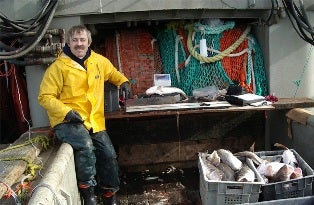Recent changes to federal law mandate that fishery managers must implement annual catch limits and accountability measures for all U.S. fish stocks by 2011. For fisheries with sparse data, this is a significant challenge as traditional stock assessments are costly and demand large quantities of time and information.
Many fisheries in the U.S. and around the world suffer from inadequate data – in fact, this may be more the rule than the exception. Moreover, there are many serious constraints to the timely assessment of stocks and to the development of annual catch limits in addition to lack of data – including stock assessment and vetting processes that cannot process available data with available resources.
Fortunately, there are new tools available to help assess data-poor fisheries using easily gathered data and/or data already on hand. Depending upon the method used, data-poor assessment models allow fisheries scientists working in agencies, in advisory panels, and in other relevant bodies to estimate current population biomass, sustainable yield, the risk of overfishing, or stock status relative to specific reference points (or proxies for any or all of these). This information can then be used to determine appropriate catch limits for target populations.
Given the large number of unassessed stocks and the urgent need for initial assessments of data poor stocks, EDF’s Ocean Innovations team has summarized relevant scientific papers into a user-friendly guide to 11 data-poor methods (available from Rod Fujita at rfujita[at]edf.org).
We’re also currently working on a comparison of four data-poor methods to determine how closely they agree with results from traditional stock assessments. Preliminary results suggest that many of these methods perform well in simulation studies and in comparison with traditional stock assessment methodology (although in some cases they may result in sustainable yield estimates that are more conservative than Maximum Sustainable Yield). Some have already been used to set Annual Catch Limits for some U.S. fisheries (see examples below).
Data-poor methods fall into four categories, depending upon the type of data each method requires and the information each method produces. For more information on a specific method, please contact Rod Fujita at rfujita[at]edf.org.
Extrapolation Methods
Example:
- Robin Hood Approach
Life-History Vulnerability Analysis
Example:
- Productivity and Susceptibility Analysis (PSA)
Sequential Trend Analysis
Examples:
- In-Season Depletion Estimator
- Depletion-Corrected Average Catch (DCAC)
- Depletion-Based Stock Reduction Analysis (DB-SRA)
- An-Index-Method (AIM)
- Reserve-Based Spawning Potential Ratio (Dynamic SPR)
- Fractional Change in Lifetime Egg Production (FLEP)
- Multivariate El Niño Southern Oscillation (ENSO) Index (MEI)
Decision Trees
Examples:
- Length-Based Reference Point
- MPA-Based Decision Tree
While these methods are relatively new, they have already been successfully used to assess several U.S. fish stocks, including Atlantic wolffish, New England red crab, and 50 groundfish species on the West Coast.
These new methods, while subject to many caveats and qualifications, are generally much faster and less expensive than traditional stock assessments. Continuing to fish stocks that are not assessed due to a lack of data poses risks to the biological and economic sustainability of fisheries. While having long-term, continuous datasets for each species is the ultimate goal, data-poor methods can help managers extract more useful information from readily available data and reduce risks associated with fishing in ignorance.












 The recent U.N. Climate Change conference in Copenhagen highlighted the range of challenges associated with fighting climate change, from cutting energy use to financing clean technology in developing countries. Why the global sense of urgency and focus? Because the impacts of climate change are already being felt. Most of our discussions center on the dangers of sea level rise, which is already inundating low-lying islands and valuable wetlands; on changes in precipitation and air temperature, which will affect everything from agriculture to asthma; and on the shift in seasons and habitat that will make life difficult for trees, butterflies, and the other wildlife we are familiar with.
The recent U.N. Climate Change conference in Copenhagen highlighted the range of challenges associated with fighting climate change, from cutting energy use to financing clean technology in developing countries. Why the global sense of urgency and focus? Because the impacts of climate change are already being felt. Most of our discussions center on the dangers of sea level rise, which is already inundating low-lying islands and valuable wetlands; on changes in precipitation and air temperature, which will affect everything from agriculture to asthma; and on the shift in seasons and habitat that will make life difficult for trees, butterflies, and the other wildlife we are familiar with.